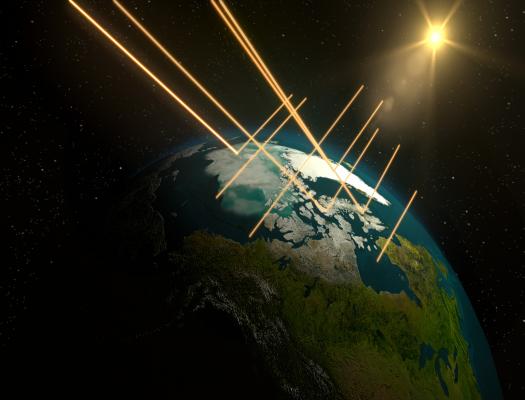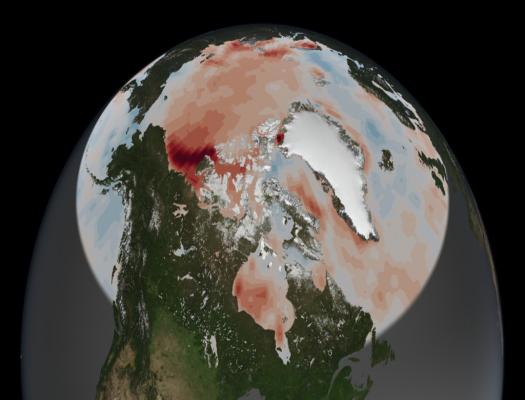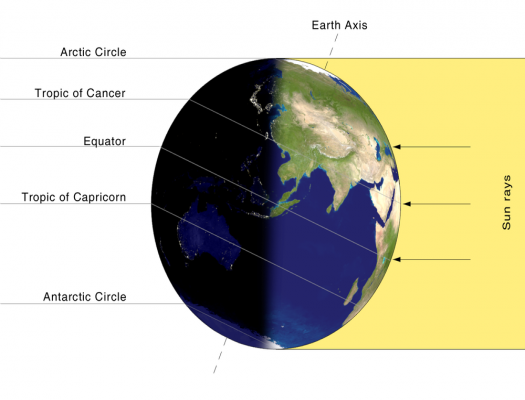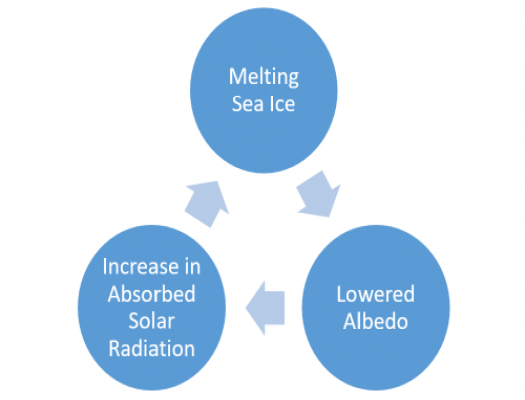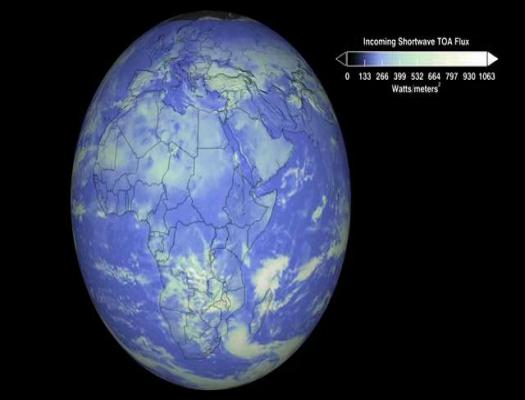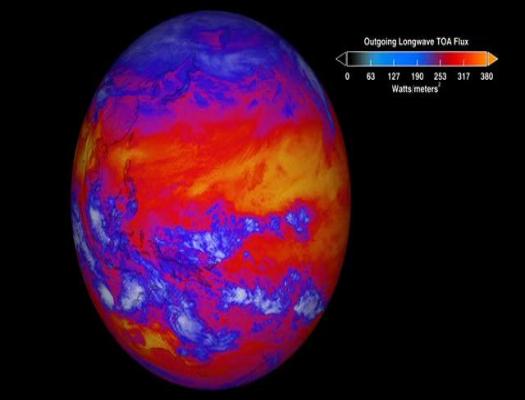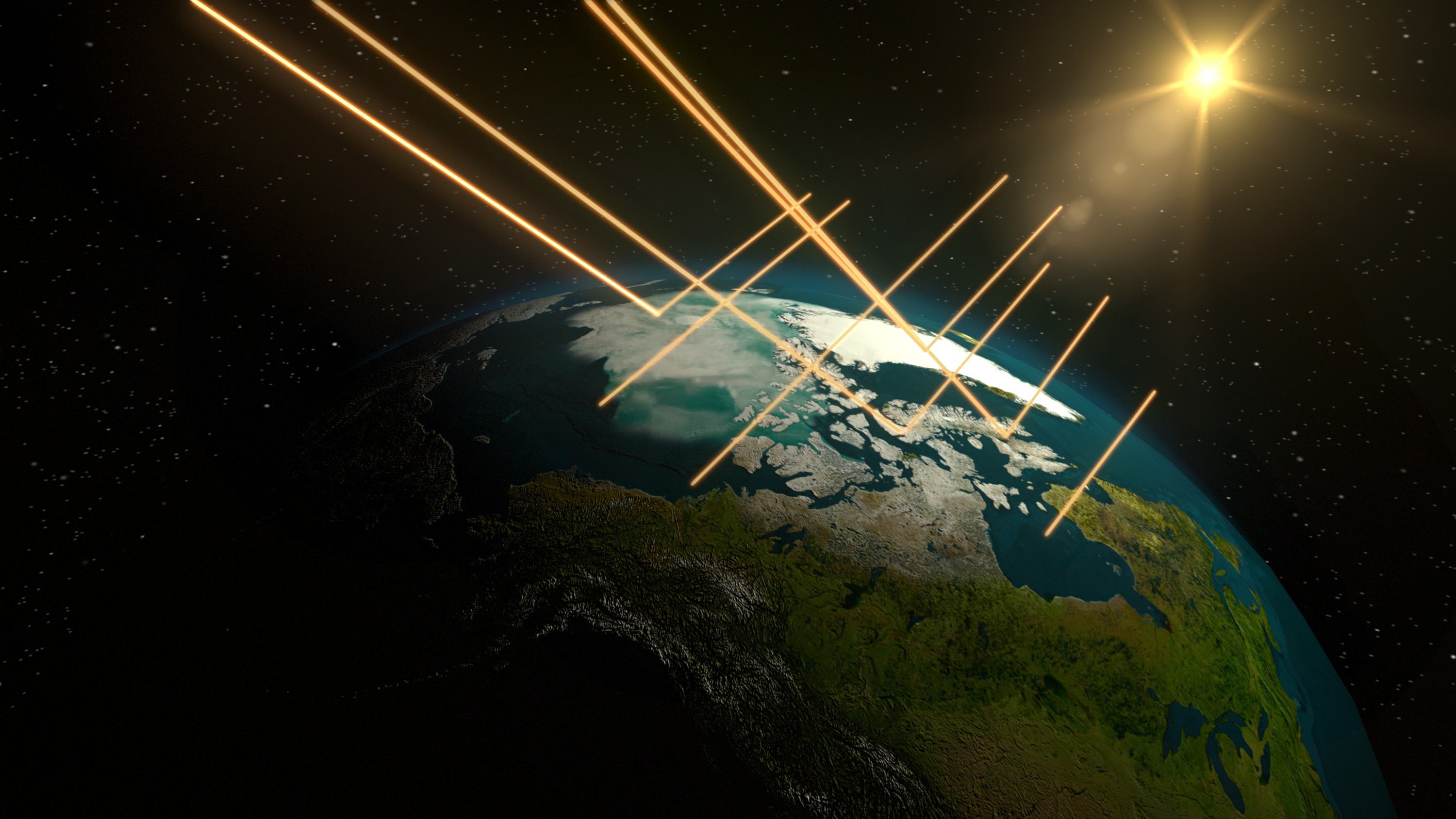When sunlight reaches the Earth’s surface, some of it is absorbed and some is reflected. The relative amount (ratio) of light that a surface reflects compared to the total incoming sunlight is called albedo. A surface with a high albedo will reflect more sunlight than a surface with low albedo. Surfaces with high albedos include sand, snow and ice, and some urban surfaces, such as concrete or light-colored stone. Surfaces with low albedos include forests, the ocean, and some urban surfaces, such as asphalt.
>> Read More >>
Just one moment,
loading Cryosphere...
Featured Mini Lessons
-
-
-
-
-
-
Grade Level: 3-5
Students watch a video introducing the concept of albedo and answer questions.
Grade Level: 9-12
Students explore albedo, sea ice, and the relationship between changing albedo and changing sea ice using data visualizations.
Grade Level: 9-12
Students connect day/night and seasonal cycles with albedo in the Arctic region.
Grade Level: 9-12
Students will make a claim about whether changing albedo contributes to changes in Arctic habitats.
Grade Level: 6-8
Students review a video showing a global view of the top-of-atmosphere shortwave radiation from January 26 and 27, 2012 and answer the questions that follow.
Grade Level: 6-8
Students review a visualization showing a global view of the top-of-atmosphere longwave radiation from January 26 and 27, 2012. They review the supporting text and analyze the data in the visualization to answer questions.
Previous
Next
Grade Level: 6-8
Students watch a video explaining albedo and its impact on Earth. The video shows visualizations of albedo across Earth and how it can change. Students will interpret the images in the video and answer questions about albedo.
Grade Level: 6-8
Students will watch a short video that explains albedo and how it plays an important role in Earth’s Energy Budget.
Albedo Values landing page. Explore maps, graphs, data, and related education resources. These resources include lesson plans, mini lessons, activities, and datasets for teachers and students.


